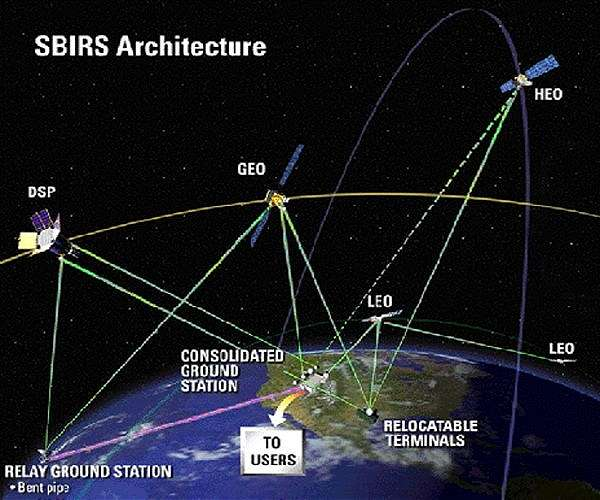TX006 米陸軍のレーザ―兵器
下記、SDAの記事、米陸軍のレーザ―兵器記事に関連した記事です。
The Defense Department’s Space Development Agency (SDA) plans to launch an experimental payload, developed together with the Missile Defense Agency (MDA), to study the infrared background created by the Earth. The experiment is called Prototype Infrared Payload or PIRPL and is foundational for developing DoD capabilities to detect and track dim, fast-flying hypersonic missiles, SDA officials said in a briefing last week.
The US Army says it’s developed a combat-capable prototype of a high-energy laser weapon. According to an army press release, the laser can be mounted on a Stryker military vehicle and used to defend troops against drones as well as rockets, artillery and mortars. Over the summer, the new weapon was successfully tested in Fort Sill, Oklahoma, in a “combat shoot-off” against a series of possible combat scenarios.
下記、参考にしてください。
Northrop Grumman completes CDR for Next-Gen OPIR missile warning mission payload
by Staff Writers
Azusa CA (SPX) Aug 06, 2021
今後のミサイル防衛(ロシアの最新技術革新を含めた)の核になっていくテクノロジーですので、ぜひご一読ください。日本だけで確立できるシステムではありませんので、何らかの協力体制を作り、この技術開発に寄り添っていく必要があります。LMや、NGとこうした内容の共同開発グループを、日本の防衛産業界が発足させ, F-X, F-3戦闘機の共同開発等も絡めて進めていくべき研究課題と思ってもらいたいですね。
下記の関連記事を理解しやすいように、略語の説明を下記にしています。
- Critical Design Review (CDR)
- Next-Generation Overhead Persistent Infrared (Next-Gen OPIR)
- Geosynchronous (GEO)
- the Defense Support Program (DSP)
- Space Tracking and Surveillance System (STSS)
- Space Based Infrared System (SBIRS)
- The fifth Space Based Infrared System Geosynchronous Earth Orbit (SBIRS GEO-5) satellite.

Northrop Grumman and Ball Aerospace successfully completed the Critical Design Review (CDR) for the Next-Generation Overhead Persistent Infrared (Next-Gen OPIR) Geosynchronous (GEO) mission payload. The completion of the Next-Gen OPIR subsystems and payload CDR meets aggressive U.S. Space Force and Lockheed Martin program objectives to ensure national security posture stays ahead of emerging global threats.
The successful CDR is a significant milestone for the Next-Gen OPIR program. With the flight design complete, the Northrop Grumman and Ball Aerospace team will manufacture, integrate and test the flight mission payload, which is scheduled for delivery to Lockheed Martin in 2023.
“The Northrop Grumman and Ball Aerospace team brings deep mission expertise in missile warning and tracking to this program,” said Scott Lee, vice president and general manager, payload and ground systems, Northrop Grumman. “Together, we’re delivering another generation of unblinking eyes in space as part of our nation’s strategic deterrence.”
As the successor to the Space Based Infrared System (SBIRS), Next-Gen OPIR will provide an improved, more resilient missile warning system to counter current and emerging threats.
The Next-Gen OPIR GEO satellites are being designed and built by Lockheed Martin. Northrop Grumman and Ball Aerospace are one of two teams selected by Lockheed Martin to develop a competitive payload design for the program.
“Decades of mission experience with modern agile infrared sensor development are the hallmarks of the Northrop Grumman and Ball Aerospace team,” said Deirdre Walsh, vice president, Strategic Operations, Ball Aerospace. “This collaborative effort has enabled us to successfully execute the critical design review of the Next-Gen OPIR GEO Block 0 mission payload – a mission critical to our nation’s security.”
In addition to developing a payload design for the Next-Gen GEO program, Northrop Grumman was selected by the Space Force to design and develop two polar-orbiting Next-Gen OPIR space vehicles.
Northrop Grumman’s legacy of space-based defense development includes the Defense Support Program (DSP) and Space Tracking and Surveillance System (STSS) satellites that have provided a combined 60 years of critical missile warning and tracking capabilities.
Related Links
Northrop Grumman
Learn about missile defense at SpaceWar.com
Learn about nuclear weapons doctrine and defense at SpaceWar.com
All about missiles at SpaceWar.com
Learn about the Superpowers of the 21st Century at SpaceWar.com
Lockheed Martin’s First Modernized SBIRS Missile Warning Satellite Now Under U.S. Space Force Control
PRNewswire Follow
May 18, 2021
SBIRS’ New LM 2100 Combat Bus™ Drives Resiliency, Efficiency and Record Production Speed
PR Newswire
BUCKLEY AIR FORCE BASE, Colo., May 18, 2021
BUCKLEY AIR FORCE BASE, Colo., May 18, 2021 /PRNewswire/ — Following a successful launch from Cape Canaveral Space Force Station in Florida earlier today, the U.S. Space Force’s Space Delta 4 operations team is now “talking” with the fifth Space Based Infrared System Geosynchronous Earth Orbit (SBIRS GEO-5) satellite.
- GuruFocus has detected 2 Warning Signs with Lockheed Martin Corp LMT.
- LMT 30-Year Financial Data
- The intrinsic value of LMT
- Peter Lynch Chart of LMT
As planned, SBIRS GEO-5—built by Lockheed Martin (NYSE: LMT)—is responding to the Delta’s commands. Signal acquisition was confirmed approximately ~36 minutes after the satellite’s 1:37 p.m. EDT launch aboard a United Launch Alliance (ULA) Atlas V rocket. Now separated from the rocket, the satellite is continuing on to orbit under its own propulsion.
SBIRS GEO-5 is the latest satellite to join the Space Force’s orbiting Overhead Persistent Infrared (OPIR) missile warning constellation equipped with powerful scanning and staring surveillance sensors. These 24-7, always-on, orbital guardians detect missile launches, support ballistic missile defense, expand technical intelligence gathering and bolster situational awareness on the battlefield.
“The world is a more threatening place now with more than 1,000 ballistic missile launches occurring globally every year,” said Tom McCormick, vice president of Lockheed Martin Space’s OPIR Mission Area. “SBIRS is the tip of the missile defense spear, seeing all those missiles and providing our military the ability to ensure our national security and the safety of our armed forces.”
Faster, More Resilient Missile Warning
Built in about five years, SBIRS GEO-5 is the first military space satellite built on an LM 2100 Combat Bus™, a version of Lockheed Martin’s modernized, modular LM 2100™ space vehicle with greatly enhanced resiliency.
The LM 2100 bus is the result of a Lockheed Martin internally-funded, multi-year modernization initiative. Features include:
- Greater resiliency and cyber-hardening
- Enhanced spacecraft power, propulsion and electronics
- Common components and procedures to streamline manufacturing
- Flexible design that reduces the cost to incorporate future, modernized sensor suites
- “We designed our modernized LM2100 bus with our military customers’ changing, more-contested environment, in mind,” said McCormick. “By adding enhanced resiliency features to the LM 2100 we created an initial ‘combat bus’ for the Space Force for even greater capability.”
- SBIRS GEO-5 is a step toward achieving the resilient missile warning to be provided by SBIRS’ follow on, the Next Gen OPIR Block 0 System. SBIRS GEO-6, launching in 2022, and the first three Next Gen OPIR Block 0 GEO satellites, as well as the future GPS III Follow On (GPS IIIF) satellites, are also based on the LM 2100 Combat Bus.
- Lockheed Martin is proud to be part of the SBIRS team led by the Production Corps, Geosynchronous Earth Orbit Division, at the U.S. Space Force’s Space and Missile Systems Center, Los Angeles Air Force Base, California. Lockheed Martin Space, Sunnyvale, California, is the SBIRS prime contractor, with Northrop Grumman, Azusa, California, as the payload integrator.
The Space-Based Infrared System (SBIRS) is a United States Space Force system intended to meet the United States’ infrared space surveillance needs through the first two to three decades of the 21st century. The SBIRS program is designed to provide key capabilities in the areas of missile warning, missile defense and battlespace characterization via satellites in geosynchronous Earth orbit (GEO), sensors hosted on satellites in highly elliptical orbit (HEO), and ground-based data processing and control.
Best regards,
Shoichi Sugiyama, Ph.D.


